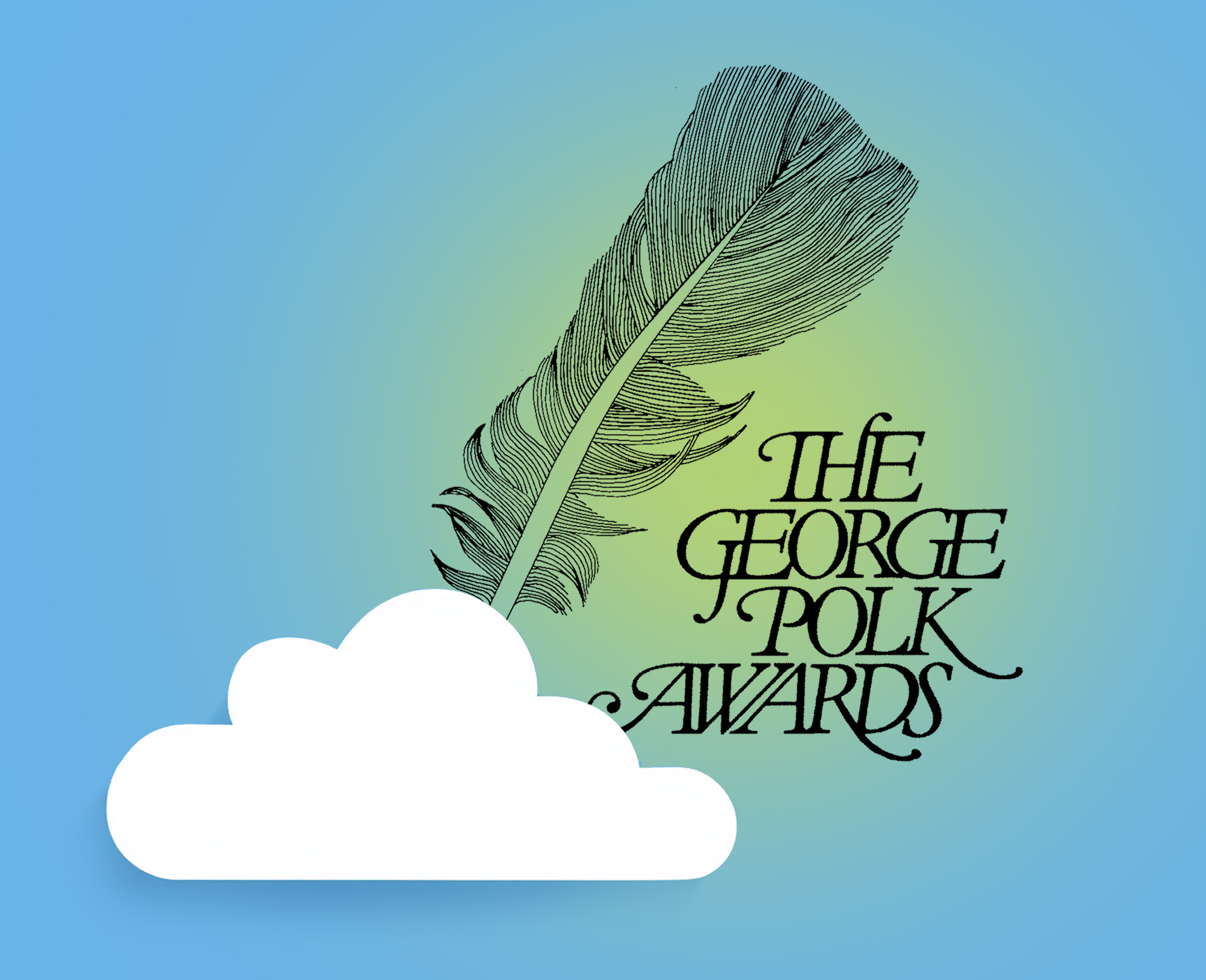Sign up for the daily CJR newsletter.
Once a year, in January, I ascend a metaphorical mountain and take a good look at the changing landscape of American journalism. The George Polk Awards are deluged with entries for outstanding work across all media platforms, and as curator I go through all of them. This year there were four hundred and ninety-three. Our eleven judges, all former or working journalists, who remain anonymous to fend off attempts at outside influence, winnowed them down to fifteen.
Now, I know that many newsrooms are gloomy and anxious places these days. Journalists fret about the financial health of their companies and the escalating threats from the new administration in Washington. In some cases, they cringe at political capitulation on the part of the owners or the sagging backbone of top editors.
But not all is dark. I can vouch that the year’s publications and broadcasts, when seen in their entirety, are wide in scope and deep in substance. The rambunctious spirit of street reporting and savvy editing is still very much alive.
Among our winners this year are a foreign correspondent who risked his life to cover Sudan’s civil war, a health reporter who uncovered hidden commercial factors for the government’s lagging response to the outbreak of bird flu, and a national TV team that exposed the practice of a Texas medical school selling the body parts of unclaimed corpses without bothering to beat the bushes to inform next of kin.
Often, the spark of a story is simple curiosity. Sara DiNatale, a thirty-two-year-old reporter for the San Antonio Express-News, was chatting with a community college instructor when he made an offhand remark about “bad guys” selling solar panels. Ten months later she produced a four-part series on door-to-door scam artists who lied about energy savings, promised nonexistent rebates, and sometimes left customers with gaping holes in their roofs. New bills in the state legislature are aiming to put them out of business.
Last year one of my favorite winners was Jesse Coburn, a thirty-six-year-old reporter for Streetsblog NYC. Jesse noticed that a lot of cars in his Bedford-Stuyvesant neighborhood in Brooklyn bore paper license plates. His sleuthing uncovered a vast illegal underground market supplying toll-evaders, suspended DWI drivers, and criminals. I think of him whenever I pass a sign on the FDR that warns “Fake Plates, Real Fines.”
The Polk Awards, sponsored by Long Island University, began in 1949. They commemorate George Polk, the CBS correspondent who was killed on assignment in Greece one year before. We’ve now given 3,140 awards. In recent years, we’ve concentrated on investigative and entrepreneurial work. We’re innovative—we were among the first to award an online site—but when it comes to values, we’re old-fashioned. Our symbol is not even a typewriter; it’s a quill pen.
I’ve occupied my perch for sixteen years now. During that time the changes in American journalism have been traumatic and far-reaching, beginning of course with the upheaving shift from print to digital. The loss of local newspapers and the decline in once-strong regional papers translates into real numbers for us. Time was, we would get half a dozen or more outstanding submissions from the big cities—Chicago, Los Angeles—and equally good ones from the smaller municipalities, like Cleveland, Raleigh, Dallas, and Hartford. Now we’re lucky to get one or two. Sometimes I am haunted by the vision of once-grand papers marshaling their resources for a single big push to win a prize that would prove they’re still in the game, a sort of newsprint Potemkin village.
Not all the trends are bad. We’ve seen the sophisticated use of vast amounts of data to support all that anecdotal reporting. We’ve celebrated new platforms, like podcasts. We’ve seen new partnerships: television working with digital, digital with video, and newspapers with other newspapers and online sites. There are foundation grants to encourage local reporting, and new generative programs. This year the UC Berkeley Graduate School of Journalism’s investigative reporting unit produced a two-part series in the San Francisco Chronicle on secret settlements that allowed police officers to hide episodes of serious misconduct.
A significant advance has been the emergence of visual investigation units that use digital sleuthing, open sources, and forensic analysis of visual material like geo-positioning data to solve once-impossible conundrums, such as which warring side shot a missile that struck a hospital. The New York Times’ unit has pioneered this field. In the war reporting category, won by Declan Walsh in Sudan this year, the team was able to use trophy videos shot and posted by marauding paramilitary commanders themselves—they linked them to war crimes.
A plethora of online news sites have moved into the news void. Each year it seems a new one pops up, often with an intriguing name. (My favorite name is Bellingcat, a Netherlands-based investigative group specializing in open-source intelligence.) Some, like BuzzFeed, command notice for a spell and eventually fade. Others continue to thrive, like the Texas Tribune, the nonprofit based in Austin that maintains a wide readership and the largest statehouse news bureau in the country.
Specialty sites have adopted ways to amplify their voices. An early success was the Marshall Project, founded in 2014 by the hedge fund manager Neil Barsky and originally edited by Bill Keller, the former executive editor of the Times. Its mandate was to reform the criminal justice system, and it found a novel way to extend its reach. Its article on the use of police dogs that won its second Pulitzer in 2021 appeared in many news outlets of all types. “We need to partner to get wide distribution,” explained Susan Chira, the former editor in chief.
Two specialty websites dedicated to medicine and health have recently commanded respectful attention. One is KFF, a site from a nonprofit headquartered in San Francisco. It won a Polk last year, together with CBS News, for a series called “When Medical Devices Malfunction.” This year it produced ten major pieces.
The other is STAT, started in 2015 by John Henry, the principal owner of the Boston Red Sox. It has sharpened its investigative chops. This year it produced a Polk winner, “Health Care’s Colossus,” a penetrating six-part series on deleterious effects on healthcare from the quasi-monopolistic dominance of the UnitedHealth Group.
Rick Berke, the cofounder and executive editor, noted that “the core audience” for STAT is health and medical experts. When the site posts an important exclusive, he said, the hits mount and “you can see the dial go up.”
But what’s missing from this new landscape of specialty sites is the adrenaline-pumping excitement that used to come with close competition when there were plenty of papers.
“You could sense the energy,” said Marty Gottlieb, a longtime newspaper editor who is now senior editor for investigations at The City, an online site in New York. “A paper would break a big story. A competitor would try to jump ahead of it. Local TV and radio stations would lead with it. And the original paper would hang onto the story aggressively. It all became the talk of the town.”
One thing that has not changed over the years is the excited reaction of the winners. Marc Duvoisin, editor in chief of the San Antonio Express-News, described it this way: “I shared the news with a group of editors and reporters. I played on a big screen one of the videos from the Polk website. I spoke about how the awards honor ‘intrepid, resourceful, and influential’ reporting, and how that credo reminds us of the high purpose that should lie at the heart of our work, and how that purpose can be served with even modest acts of journalism that tell citizens things they might not otherwise know. I wasn’t sure how my little speech would be received, but I was gratified to see looks of wonder on a few faces as the video played.”
Has America ever needed a media defender more than now? Help us by joining CJR today.







